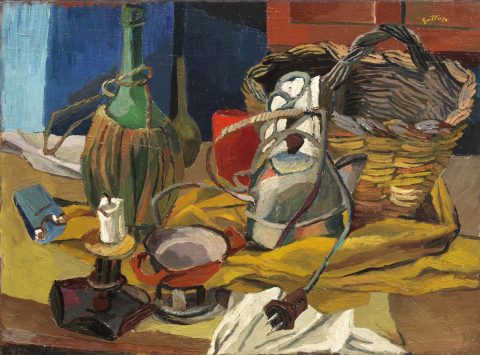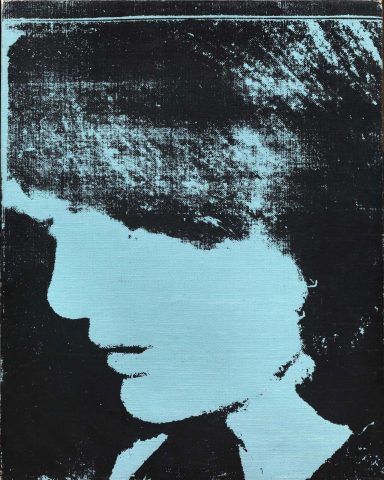Roberto Casamonti: ‘I am like a mermaid’ (a lesson for art collectors)
Roberto Casamonti, founder of Tornabuoni Arte, opens his private art collection to the public giving to Europe a brand new powerful museum. But there’s a message you may like to know behind this new cultural model.
- Roberto Casamonti, 2018. Ph: Stefano Pirovano.
- Palazzo Salimbeni, Firenze.
- Renato Guttuso, fiasco-candela-bollitore,1940-41. Collezione Roberto Casamonti,
- Giacomo Balla, Idealfiamma, 1929. Collezione Roberto Casamonti, Firenze.
- Alberto Burri. Rosso Nero, 1955. Collezione Roberto Casamonti, Firenze.
- Giorgio de Chirico, Ettore e Andromaca, 1950. Collezione Roberto Casamonti, Firenze.
- Le Corbusier, Taureau, 1960. Collezione Roberto Casamonti, Firenze.
- Marino Marini, Personaggi del circo, 1950. Collezione Roberto Casamonti, Firenze.
- Pablo Picasso, Deux pigeons, 1960. Collezione Roberto Casamonti, Firenze.
- Mario Sironi, Periferia. Il tram e la gru, 1921. Collezione Roberto Casamonti, Firenze.
- Andy Warhol, Jackie, 1964. Collezione Roberto Casamonti, Firenze.
A 500 square meters apartment on the noble floor of Palazzo Bartolini Salimbeni, which is a Renaissance masterpiece of architecture designed by Baccio d’Agnolo at the dawn of the XVI century, is going to become Roberto Casamonti’s outstanding art collection’s new home. Located in Piazza Santa Trinità, that is to say in the very patrician core of Florence, the Collezione Roberto Casamonti opens to the general public on 24th March 2018. Mr. Casamonti’s eldest son, architect Marco Casamonti, designed the new Florentine home-museum hosting masterpieces from the XX century by artists such as Giacomo Balla, Mario Sironi, Giorgio de Chirico, Felice Casorati, Le Corbusier, Marino Marini, Renato Guttuso, Lucio Fontana, Piero Dorazio, Alighiero Boetti, Andy Warhol, just to mention a few. Mr. Casamonti, in his late seventies, is enthusiastic about his new ‘adventure’ and hopes it will be as successful as the gallery he opened in Florence back in 1981. At some point of the interview we had with him a few weeks ago in his office, he showed us a writing printed on a wooden board hanging on the wall behind the chairs we were setting on. It was a quotation from Ruyard Kipling’s ‘If’ poetry. Roberto Casamonti told us he found it in the street during the flood in Florence, back in 1966, when his father’s furniture shop went destroyed. “If you can make one heap of all your winnings/ And risk it on one turn of pitch-and-toss,/ And lose, and start again at your beginnings/ And never breathe a word about your loss”…
What does collecting art mean for you?
I would say that collecting art is a full time job. I started my gallery back in the 1980s, in via de’ Tornabuoni, Florence. I was already collecting art, with my father, and I did it for my own pleasure, without any expectation. But the gallery did well, and soon I became fully committed to that. Now I have galleries in Paris, London, Milan, Florence, Crans Montana. Collecting art took my soul.
Are your galleries in service of your collection, or vice versa?
Most of the art dealers are also collectors. It may happen that you become an art dealer when you realize that some of the pieces you bought are not the one you really want to collect. So you try to sell them, and it becomes a behavioural pattern before you know it. You sell what is worth less in order to keep the best pieces for yourself.
Italian top dealer Massimo de Carlo tells a similar story about himself. He won the lottery and with that money bought some works of art, but after a while he realized that they were not the right ones. That’s how his career started. Later this year La Triennale in Milan will exhibit his collection of Alighiero Boetti’s tapestries.
I appreciate him, and I didn’t know this story. I think that all the art people do share the same problems which come from loving art.
Why did you choose to open a collection, instead of a museum?
Because I wanted to share with the public those paintings that I am most attached to. The pieces I am going to show are representative of some great artists, but also of my personal experience as an art collector. In a way I am like a mermaid. I am half an art dealer and half a collector. And I can proudly say that the collector had the opportunity to meet great artists, such as Emilio Vedova and Piero Dorazio. Unfortunately Lucio Fontana passed away before I could meet him, but I was close to his widow Teresita.
As a collector, what interests you most, the artist or his/her works?
A work of art can be beautiful, but if any great intelligence is backing it, it gets lost. For instance, if an artist copies another one, his work has no value, even if it’s beautiful. The time will prove the artist is right only if he is really able to make something new. In this sense, I would say that Picasso and Fontana were both able to look into the future of art. And they brought art to an upper level of quality, expressiveness, beauty. Generally great works come from very intelligent men. Another good example is Alighiero Boetti, whom I met many times. You wouldn’t believe how a brilliant conversationalist he was.
What kind of collector do you think you are?
It happened to me many times not being able to fall asleep because of the piece I was about to buy. Purchasing a work of art is like seducing a woman. It’s challenging and stimulating. I know that for many artists whom I like I still don’t have their masterpieces. Nevertheless, I’m happy to have been able at least to purchase some good piece.
Is there any particular message that your collection embeds?
Generally speaking I think it’s a tribute to a passion, in this specific case my passion for art. Of course I’ve earned some money in my career; selling a work by Lucio Fontana that you bought 20 or even 30 years before is generally a good deal. But I can assure it’s not money what collectors are looking for.
Are you covering all the costs of the institution?
The Roberto Casamonti Collection is a no profit institution. I am giving the artworks and the location. But I will need the help of some private partners to support the collection’s cultural program. I hope to find them along the way. I would like to offer visitors free entrance to the collection.
What would you pinpoint as your main strength as an art dealer?
I was among the first ones working with contemporary artists such as Lucio Fontana and Alighiero Boetti. Now they have become contemporary masters, but there was a time they were almost unknown artists. I must say I am also interested in the first half of the XX Century, especially concerning artists such as Felice Casorati, Ottone Rosai, Giorgio De Chirico, Giorgio Morandi, Ardengo Soffici, Massimo Campigli, Renato Guttuso. These were the artists my father was interested in, the ones I grew up with. In this regard I would add that this collection is somehow also a dream my father had, but he couldn’t fulfil.
Did you make any new acquisition to celebrate the opening of your Collection?
I’ve bought a large painting by Giovanni Fattori at auction and a Felice Casorati’s from my colleague Giulio Tega. I had already 8 pieces by Casorati, but the new one is certainly the best amongst them.
Once you claimed, ‘it’s always better to have artworks than money’. Could you elaborate on it?
Art is a long-term bet and when you know that you are buying the right work, you shouldn’t care too much about the price. It may take time, but at some point the piece will tell whether you were right about it. But then you may have got old, and conservative, and you don’t want to sell it even if it is worth a lot of money. It has become part of yourself, and you have become part of it.
March 14, 2018











